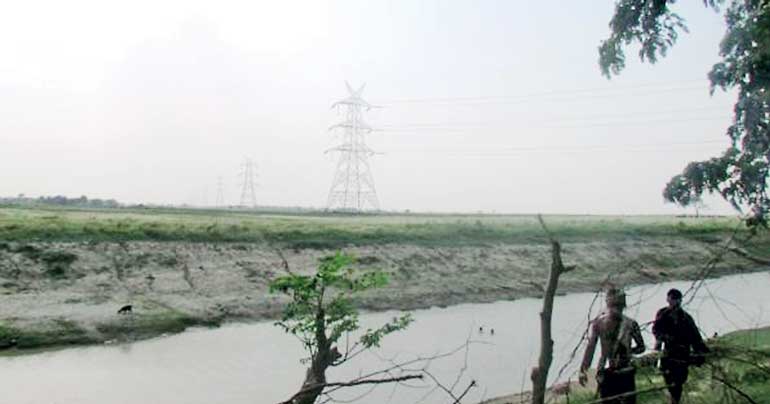Wednesday Mar 12, 2025
Wednesday Mar 12, 2025
Tuesday, 12 December 2017 00:00 - - {{hitsCtrl.values.hits}}

By Priyantha Wijayatunga
http://blogs.adb.org: The importance for a country of having reliable power supply cannot be overemphasised. Energy supports industrialisation, especially through small and medium-sized enterprises that are crucial to sustaining poverty reduction. Energy also gives people living in rural areas more livelihood opportunities.
Countries that lack sufficient energy resources of their own are increasingly trying to reap the many benefits of cross-border power trading.
First, unanticipated shortages in one country’s power grid can be readily solved by imports from a neighbouring grid. Second, given the different times of peak power demands of neighbouring national grids, one grid doesn’t need to generate all its power to meet peak demand; it can instead buy from another grid for its partial requirements, and vice versa. This resulting “load diversity” reduces overall investment needs in national energy generation plans.
Moreover, between neighbouring countries with varying energy resource endowments, power trading enables grids to access the cheapest power sources available.
A good example is in the Greater Mekong Subregion, where power trading has been promoted for about 25 years now. Tapping the enormous hydropower potential of the Lao People’s Democratic Republic (Lao PDR) and Myanmar has the added environmental benefit of replacing dirty coal-fired plants.
Since the power production of both countries far outstrips their domestic demand, the Lao PDR and Myanmar export their excess hydropower to the Peoples’ Republic of China, Thailand and Viet Nam, all of which need more energy to continue growing. The hydropower exporters also take advantage of the neighbouring grid to electrify remote border communities.
The member countries of the South Asia Subregional Economic Cooperation (SASEC) program are in a similar situation. Bhutan, Nepal and Myanmar have enormous hydropower potential far in excess of current local demand, which can be exported to rapidly growing but energy-constrained economies such as Bangladesh and India.
SASEC countries have been actively forging bilateral and regional arrangements for power trade, recognising that these will help further tap cheaper and cleaner energy sources within the subregion. They also enable them to jointly share in developing new capacity or in the use of already available capacity.
ADB is actively backing these efforts by supporting projects like the 114 MW run-of-the-river Dagachhu hydropower plant in Bhutan, which now provides reliable power supply to about 9,000 rural households and allows the Himalayan kingdom to export 750 gigawatt hours per year of clean energy to replace electricity from thermal plants in India. This project is widely considered the first certified cross-border project in the world under clean development mechanism.
Energy cooperation
An interesting variation on these traditional power trading projects are grid-to-grid connections. Instead of exporting power from a generation plant to a grid, grid-to-grid connections entail direct transfer of power from one national grid to another.
For instance, Bangladesh now imports up to 500 megawatts from India under a 2013 project supported by a $112 million ADB loan. In four years, this grid-to-grid connection has significantly improved power supply and cost, and reduced power interruptions in Bangladesh, where shortages were rampant at the time. The two countries are now looking to double the capacity of their power trading arrangement financed through another ADB loan of $120 million.
SASEC countries recognise that strengthening energy cooperation can help them to cope better with emerging energy sector challenges such as rapidly increasing energy access needs and emphasis on climate change mitigation. Under the 2016-2025 Operational Plan, SASEC countries are looking to expand energy trade infrastructure, and boost power trading with the overall goal of creating a subregional power market.
SASEC countries need to continue interacting at all levels to address remaining barriers to power trade. These include absence of adequate cross-border transmission capacity, and lack of clarity on regulatory oversight on cross-border trade. Continuing efforts to enlighten the decision makers and other stakeholders is key in this regard.
Also, harmonising technical and regulatory requirements—such as a common cross-border transmission grid-code, rules and regulations for open access to transmission facilities—and identifying optimal investments for cross-border trade are both critical for further power trade development. ADB’s SASEC program can continue to facilitate these activities with lessons and experience from other regions, and by providing advice and much needed financing.
The current bilateral arrangements for power trading among SASEC countries need to gradually expand in their volume and beyond two-country agreements. Some initiatives in this regard can already be seen, like the agreement to export power from a specific generator in Nepal to Bangladesh through transmission grid in India, and preliminary discussions for Bangladesh to invest in a hydropower plant in Bhutan.
We hope they will further expand in the near future. More bilateral and multilateral power trading can pave the way to developing a single interconnected power market in the SASEC region that will benefit all countries.
In such a market, the power systems of all the SASEC countries would be integrated through adequate cross-border transmission capacity, so that the countries can share their generation with each other. Under this arrangement, smaller countries like Nepal and Sri Lanka would rely on the market to provide reserve generation capacity, lowering their own investment costs, while fossil fuel-based generation in Bangladesh and India would be replaced with cleaner hydropower from Bhutan and Nepal.
A single interconnected power market is a clear win for SASEC countries. ADB will continue to support efforts to achieve this goal.
[The writer is Director (Energy Division), South Asia Regional Department, Asian Development Bank.]
Discover Kapruka, the leading online shopping platform in Sri Lanka, where you can conveniently send Gifts and Flowers to your loved ones for any event including Valentine ’s Day. Explore a wide range of popular Shopping Categories on Kapruka, including Toys, Groceries, Electronics, Birthday Cakes, Fruits, Chocolates, Flower Bouquets, Clothing, Watches, Lingerie, Gift Sets and Jewellery. Also if you’re interested in selling with Kapruka, Partner Central by Kapruka is the best solution to start with. Moreover, through Kapruka Global Shop, you can also enjoy the convenience of purchasing products from renowned platforms like Amazon and eBay and have them delivered to Sri Lanka.
Discover Kapruka, the leading online shopping platform in Sri Lanka, where you can conveniently send Gifts and Flowers to your loved ones for any event including Valentine ’s Day. Explore a wide range of popular Shopping Categories on Kapruka, including Toys, Groceries, Electronics, Birthday Cakes, Fruits, Chocolates, Flower Bouquets, Clothing, Watches, Lingerie, Gift Sets and Jewellery. Also if you’re interested in selling with Kapruka, Partner Central by Kapruka is the best solution to start with. Moreover, through Kapruka Global Shop, you can also enjoy the convenience of purchasing products from renowned platforms like Amazon and eBay and have them delivered to Sri Lanka.